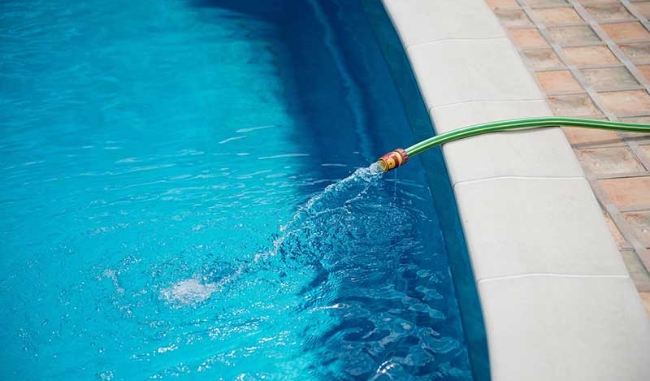Do you ever wonder how something as handy as a garden hose may potentially turn into a tool capable of contaminating your (and your neighbor’s) drinking water supply? Beware of cross-connections!

Have you ever left a running garden hose dipped in your swimming pool or fish tank? Do you spray your plants with an herbicides-filled sprayer hooked to your garden hose? These are both examples of cross-connections.
A cross-connection is an actual or potential connection between potable water and non-potable water or hazardous material (soapy water, pool water, pesticide, etc.), which can contaminate your drinking water if backflow occurs. Backflow is an undesirable flow of water or other items back into the pipe, hose, or faucet rather than flowing to the intended point. If the water pressure in your house drops (this can be caused by nearby firefighting or water main break), it can cause the hose to suck water in. Anything that’s connected to your hose (be it liquid, solid, or gas) can flow back (“backflow”) into the distributing pipes and your drinking water supply.
Help Avoid Backflow Incidents
Cross-connections can result in severe chemical or microbiological contamination events in drinking water systems and temporarily shut down a community’s water supply. Avoid them by using your knowledge and common sense.
Always have an approved backflow device at the hose spigot and an air gap between the liquid level and whatever container you are filling. In other words, don’t leave the end of a hose in a place where contaminants can be drawn through the hose back into your drinking water pipes.
Install backflow prevention devices, especially on outdoor hose faucets. They are inexpensive and can be found at many local hardware stores. Installing these devices is the water system user’s responsibility and expense.
